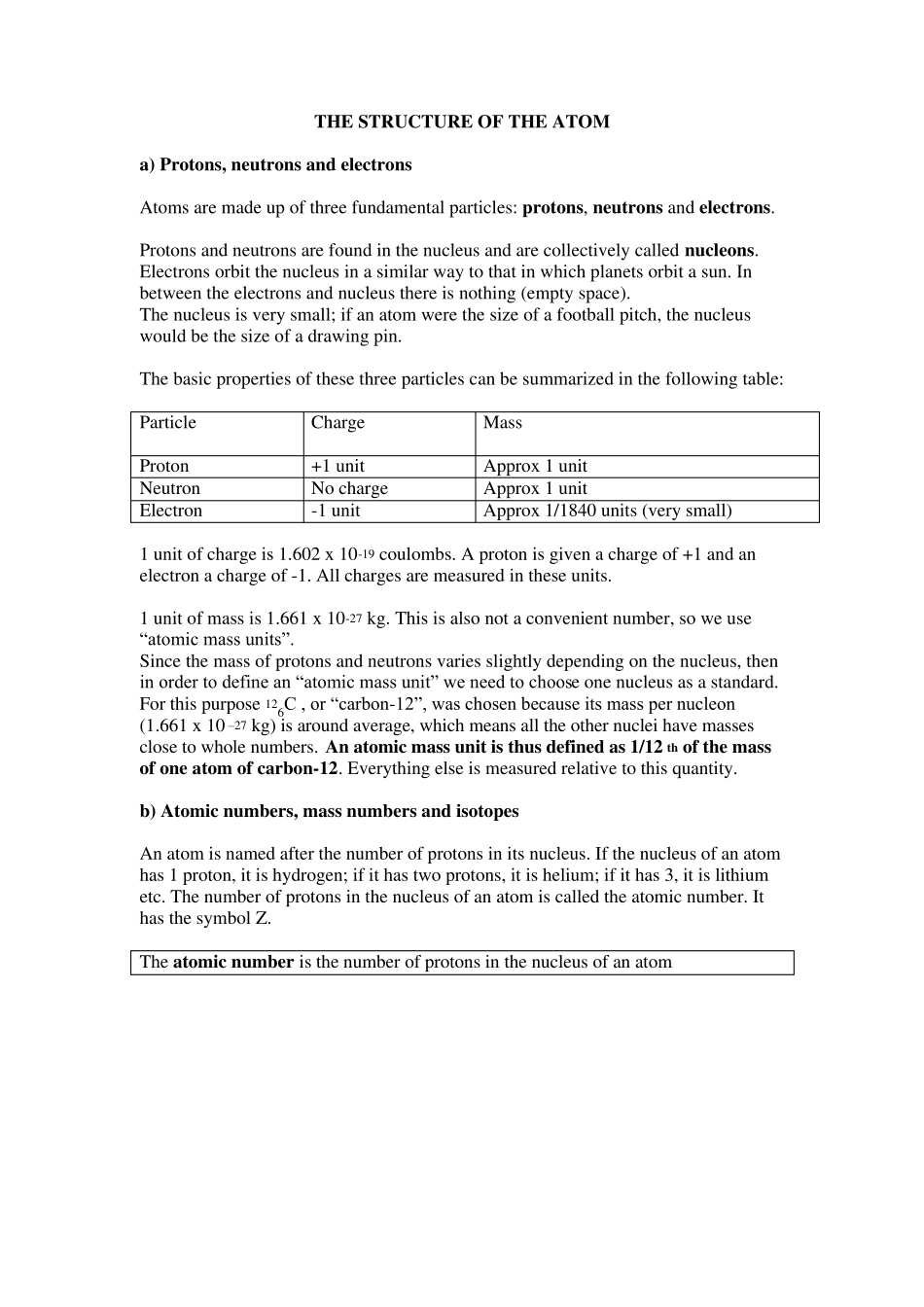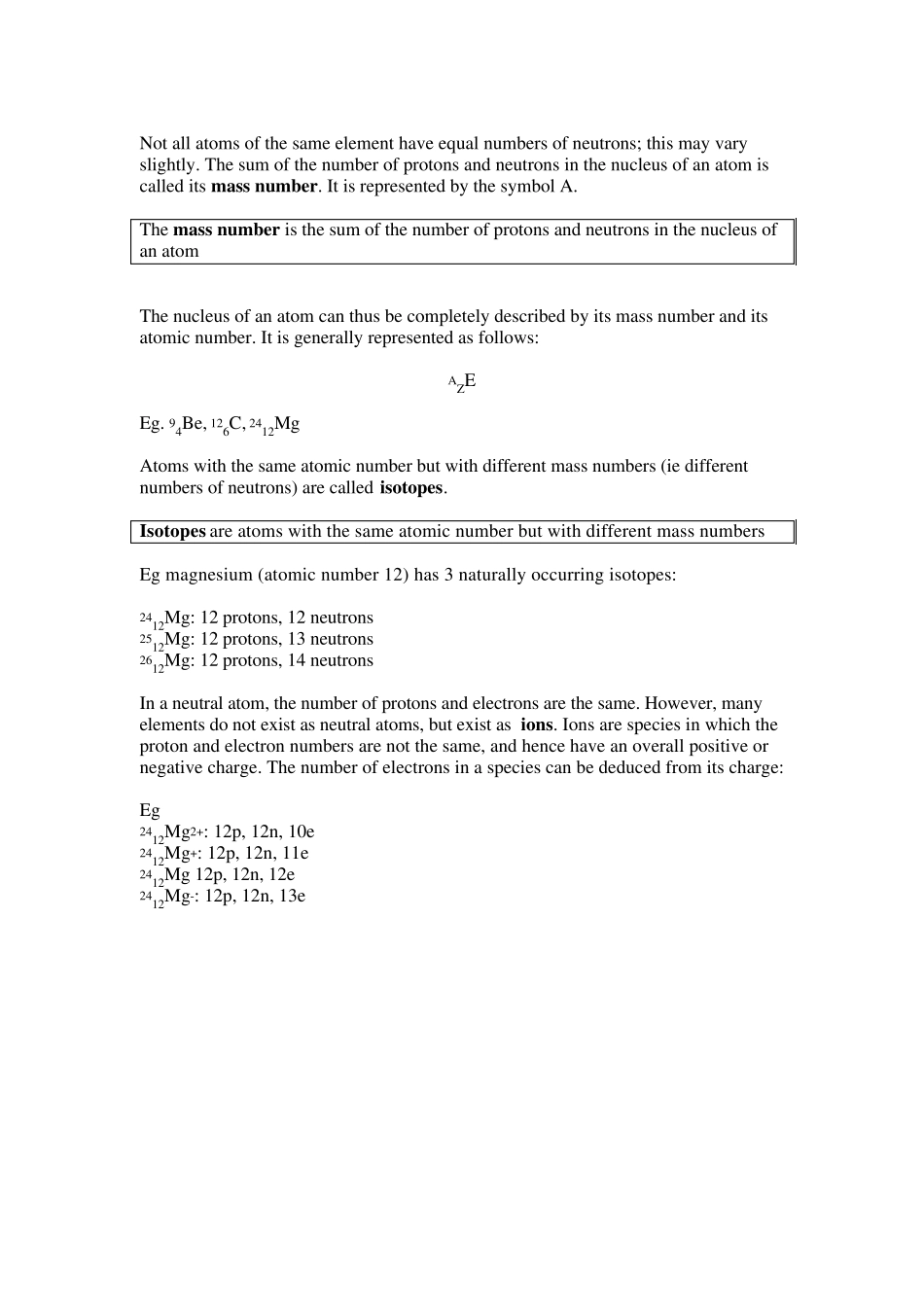1.1 Atomic stru ctu re The Stru ctu re of the Atom Mass Spectrometry Electronic Stru ctu re Ionisation Energies THE STRUCTURE OF THE ATOM a) Protons, neu trons and electrons Atoms are made up of three fundamental particles: protons, neu trons and electrons. Protons and neutrons are found in the nucleus and are collectively called nu cleons. Electrons orbit the nucleus in a similar way to that in which planets orbit a sun. In between the electrons and nucleus there is nothing (empty space). The nucleus is very small; if an atom were the size of a football pitch, the nucleus would be the size of a drawing pin. The basic properties of these three particles can be summarized in the following table: Particle Charge Mass Proton +1 unit Approx 1 unit Neutron No charge Approx 1 unit Electron -1 unit Approx 1/1840 units (very small) 1 unit of charge is 1.602 x 10-19 coulombs. A proton is given a charge of +1 and an electron a charge of -1. All charges are measured in these units. 1 unit of mass is 1.661 x 10-27 kg. This is also not a convenient number, so we use “atomic mass units” . Since the mass of protons and neutrons varies slightly depending on the nucleus, then in order to define an “atomic mass unit” we need to choose one nucleus as a standard. For this purpose 126C , or “carbon-12” , was chosen because its mass per nucleon (1.661 x 10 – 27 kg) is around average, which means all the other nuclei have masses close to whole numbers. An atomic mass u nit is thu s defined as 1/12 th of the mass of one atom of carbon-12. Everything else is measured relative to this quantity. b) Atomic nu mbers, mass nu mbers and isotopes An atom is named after the number o...


